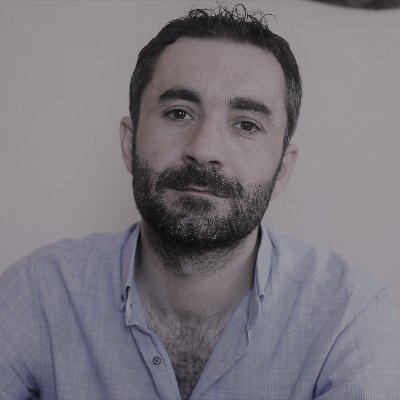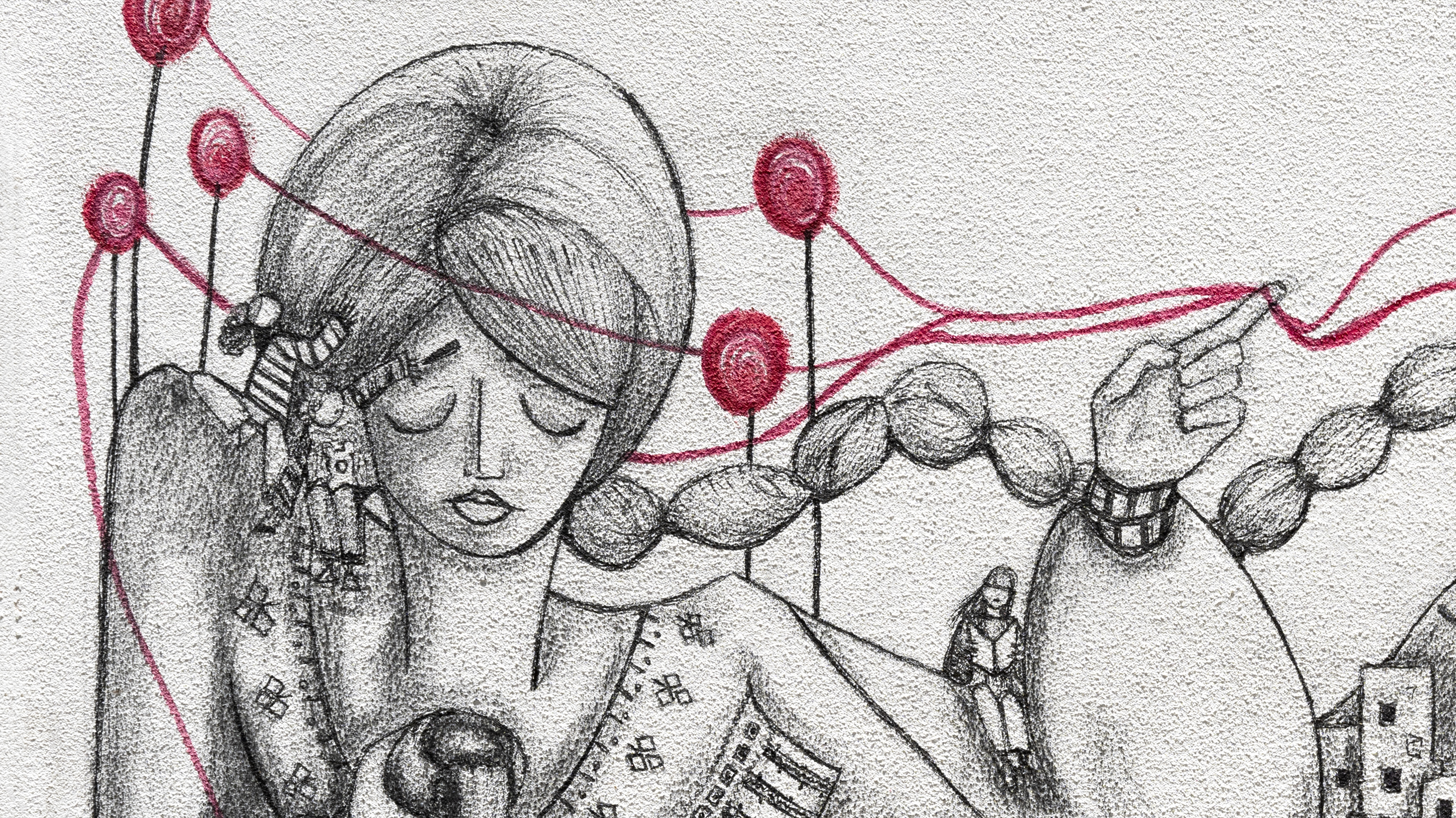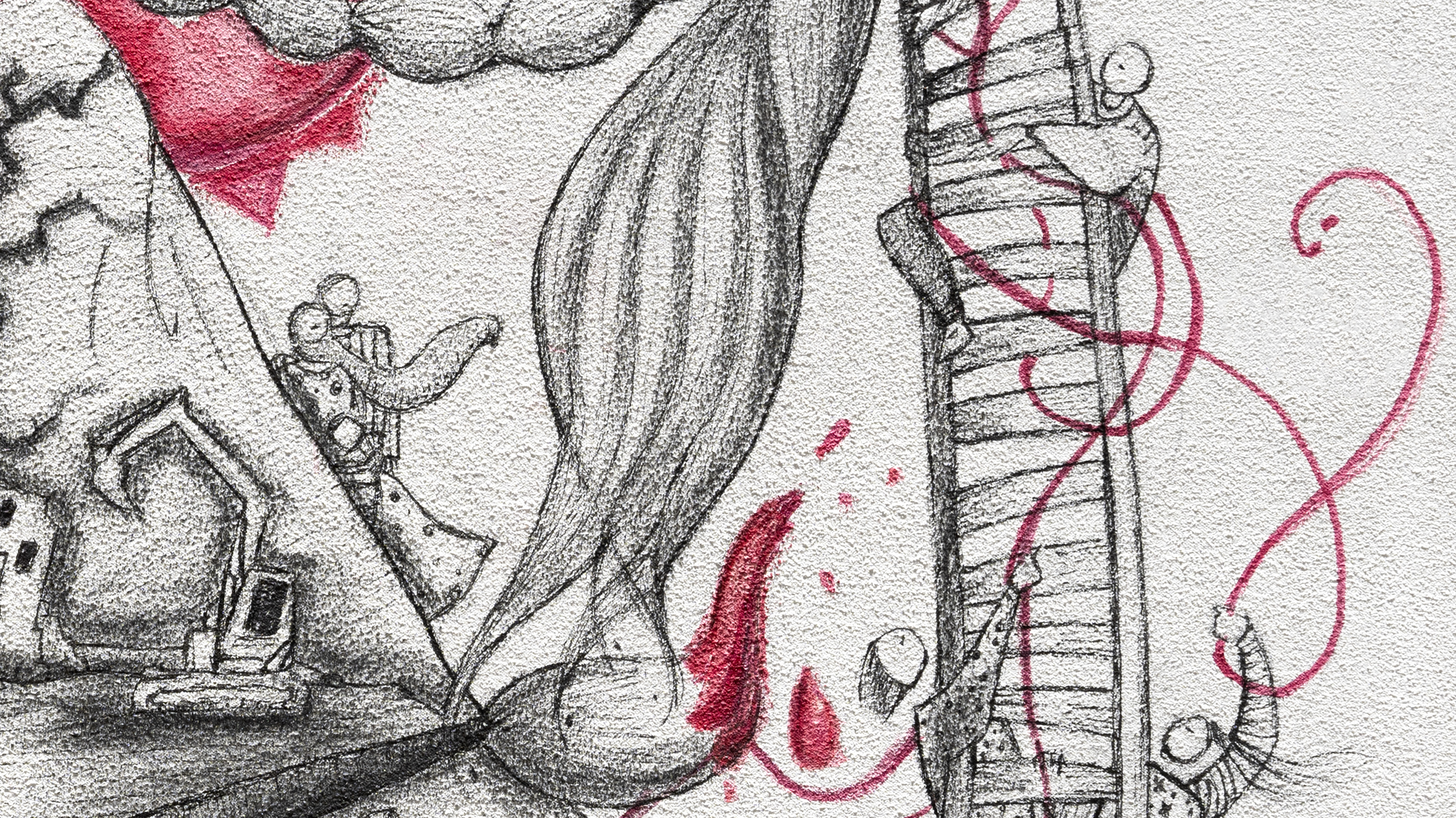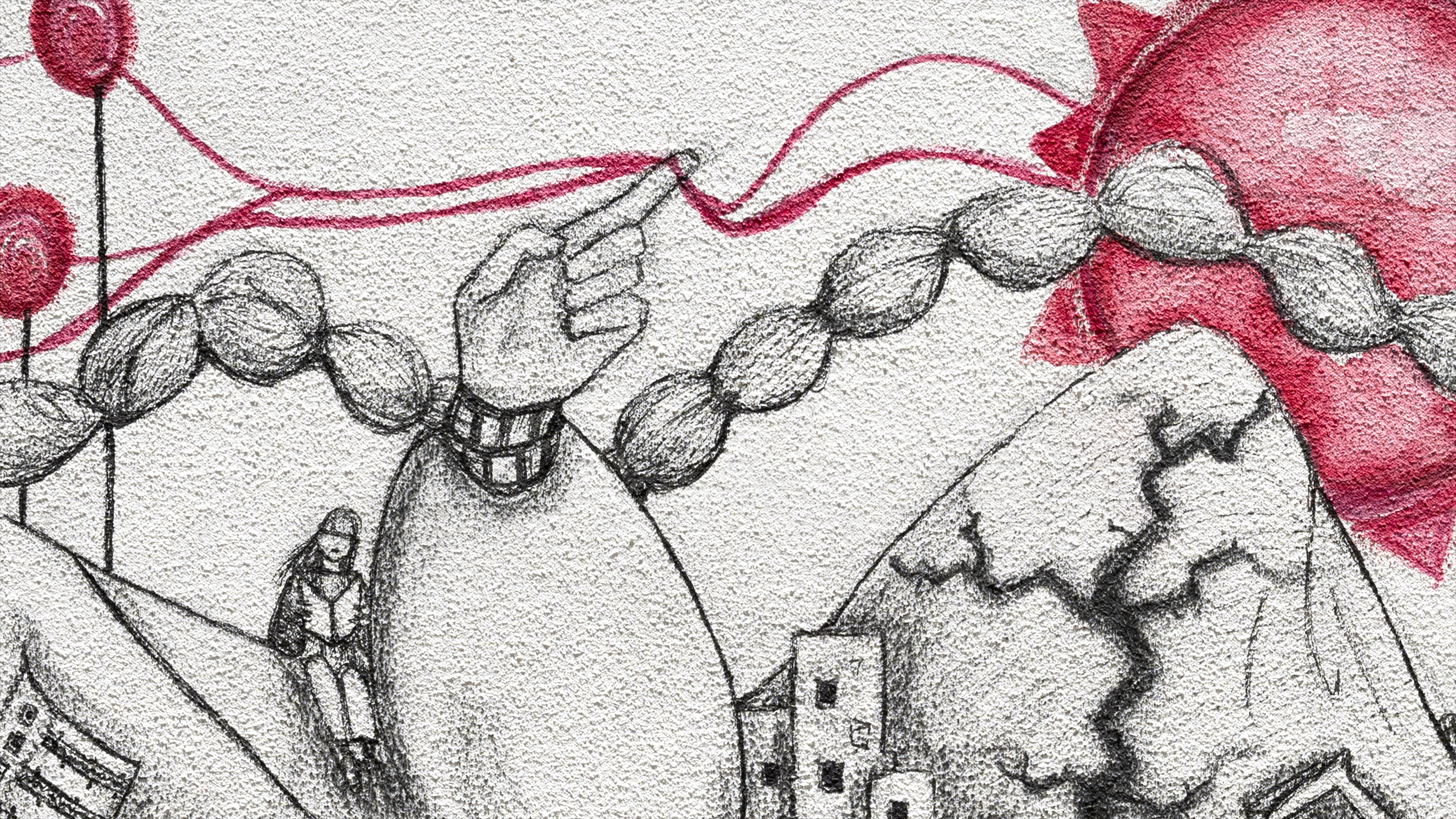This article is part of a dossier in collaboration between Syria Untold and Orient XXI, exploring the aftermath of the devastating earthquake that struck Turkey and Syria in February 2023.
"As If It Were Judgment Day"
"I woke up to the sound of books falling onto my bed, along with the screams of my family," says Manal (pseudonym/30 years old), who witnessed the initial moments of the earthquake in Aleppo. She continues, "I heard my father saying: Open the Quran and see if there is any writing on it. I remembered a story he once told us about how the pages of the Quran turn blank when the Hour of Judgment approaches... I rushed to grab the Quran, opened it, and then screamed; the Quran was blank... the Quran was blank."
The young woman recalls how, amidst the trembling earth and escalating terror, her senses momentarily deceived her. It wasn't Judgment Day, but rather the first tremor, followed by subsequent shocks that persisted for weeks, leaving behind fear and substantial human and material losses in a country already devastated by war.
While our narrator and her family survived this ordeal with minor losses, many others did not. According to a recent report by the Syrian Center for Policy Research, the earthquake took the life of 6,392 people across Syria, with over 70% in opposition-controlled areas in the north and northwest of the country. It also led to the destruction or damage of 12,796 buildings, of which 76% were in opposition-held areas. The critical aspect for us is that the exceptional scale and timing of this catastrophe resulted in exceptional societal consequences, and to some extent, political ones. We believe that these outcomes have not received the attention they deserve.
We Have Returned to the Days of 2011
The uprising triggered a massive surge of societal mobilization, with millions of Syrians in the country actively involved in the earthquake response and rescue operations. They collected financial and in-kind donations, applied media pressure, and more. From abroad, the influx of financial aid from both Syrians and non-Syrians towards the regions affected by the earthquake came so substantial that is momentarily disrupted the financial transfer system in Aleppo and other areas.
A journalist from Damascus, who went into the field and actively assisted the affected areas, says, 'It felt as if we had returned to the days of 2011, both in the number of people participating in the response, and in the fervor, empathy, and absence of fear.'
The journalist continues, 'It was an unprecedented display of societal solidarity, and for the first time in over a decade, we heard voices expressing solidarity with Idlib from within government-controlled areas.' This was not confined to Damascus alone, but also in Tartus. A 45-year-old lawyer actively engaged in the response attests, 'Compassion transcended sects and political alignments because this time, the matter was related to a natural disaster, devoid of any political conflict or warring factions. Even us, we were bolder in going to the streets and working with the people.' Indeed, even from the most war-ravaged areas in Syria, convoys of in-kind donations emerged to aid the regions affected by the earthquake. Countless examples abound from Deir ez-Zor, the countryside of Hama, Damascus, and beyond. All the activists we interviewed unanimously concurred that the sole assistance the earthquake-affected areas received in the initial five days came from non-official civil groups and volunteer teams. Governmental organizations and agencies only began their efforts on the fifth day. Even upon their belated arrival, this response was marred by politicization, corruption, and inefficiency, as highlighted by various media outlets and social media activists.
It was an unprecedented display of societal solidarity, and for the first time in over a decade, we heard voices expressing solidarity with Idlib from within government-controlled areas.
At the city and provincial levels, dedicated local volunteer teams and activists, driven by personal connections and mutual trust, assumed the responsibility of responding in those crucial initial days. Cross-provincial networks were also active. Some individuals we spoke to were involved in transporting donations from Hama to Aleppo, while others coordinated efforts between Damascus, Latakia and Tartus. In Latakia and Damascus, our interviews revealed that a significant portion of those leading the response were the same individuals who had been engaged in humanitarian work during the early years of the uprising, as recounted to Syria Untold by Iyad (33 years old, pseudonym, Damascus).
Bureaucratic Barriers and the Suffocation of Civil Relief Efforts
Tamim (pseudonym/ 28 years old) recounts how, from the moment the earthquake struck, he contacted his friends and acquaintances. On the first day, they managed to gather a small truckload of in-kind donations from Tartus, intending to send it to Aleppo. He states, ‘Most people donated from their own homes, offering clothes, blankets, food, and even items from their kitchen cabinets. We were astonished by the quick response despite the economic hardships faced by every Syrian.’ Tamim and his colleagues coordinated with another group of activists in Aleppo, responsible for the aid’s distribution. Both teams agreed to use a local transport company for delivery, aiming for distribution on the second day following the earthquake. ‘We rented a small truck, loaded the donations ourselves, and headed to the departure point. To our surprise, the company had been instructed not to dispatch any aids without written approval from the governorate. We had already unloaded the donations, so my colleagues went to the governorate building to obtain the approval that never arrived.’
The state was quicker in obstructing civil response than in providing aid to the victims. Tamim and his companions were left with their materials exposed on the sidewalk beside the company's office in Tartus, with rain pouring down. By the end of the day, they had to rent another truck to return the materials to their initial gathering place. It wasn’t until days later that these supplies finally reached Aleppo, included in a convoy of aid organized by an association affiliated with the authority, under the name of that association.
The failure of the emergency humanitarian response
25 August 2023
The Arts of the Earthquake
11 August 2023
Authorities repeatedly restricted the activity of volunteer teams across various regions and situations. Directives were issued to bar the collection and distribution of donations, permitting only government bodies or licensed associations to handle such operations. Foreign financial donations faced similar restrictions, confined to the Syrian Trust for Development and the Syrian Red Crescent. In this climate, numerous stories emerged, with "Mu’in Ali"’s account being among the most prominent. In a video, he criticized the authorities for compelling him to hand over his collected donations to the governorate, or to obtain a security permit for distribution. The video starkly revealed citizens' lack of trust in government institutions and licensed associations/affiliates. This significantly impacted people's willingness to help, resulting in a decline in donation volume and a weakening of the social solidarity created by the earthquake.
"In the first few days, the state’s actions solely involved opening schools and dispatching security forces to affected areas, sidelining all other state institutions. Security forces intimidated volunteer teams and confiscated numerous donations destined for various locations. One week after the earthquake and the increasing pressure, most of us withdrew from the field," says Suhair, who was active in Damascus (pseudonym/ 33 years old).
Love Letters from Forgotten Places
Suhair's work lies in organizing and repackaging in-kind donation, collected from various regions, and brought do Damascus for the benefit of the affected areas in the countryside of Latakia. Speaking with Syria Untold, the volunteer confides that nothing affected her profoundly as the letters attached by families to the donation boxes and bags they provided. She recounts, "There was a letter written by a child from the town of Shahba in the countryside of Sweida to a child in Aleppo. He enclosed it with a drawing notebook and his own set of colors. It seems that the child from Shahba had seen a child from Aleppo crying on one of the screens, lamenting the loss of his notebooks under the rubble, so he responded." It had been a long time while since Syrian towns and cities communicated in this manner, like the early stage of peaceful protests when they exchanged messages of solidarity and love. The convoys of donations that emerged from the homes and bedrooms of Syrians, along with the letters they carried, extended this connection/communication. It was a rare opportunity to mend the torn fabric of Syrian society.
Can Societies Perish?
Certain social science literatures argue that the essence of a society lies in the networks of relationships between individuals and groups, coupled with the behaviors and shared values that accompany them. These bonds and commonalities are what set a society apart from a mere assembly of individuals in a specific spatial context, collectively referred to as social structure or social capital. Therefore, societies decline when the relationships among their members weaken, and they die when those connections deteriorate. What the Syrians experienced during February earthquake, besides being a major catastrophe, was a window through which the Syrian society demonstrated that those relationships and commonalities are still alive among the Syrians. As for the regime’s response to this social solidarity, it served as a stark illustration of the regime's goal: to kill the society and transform Syrians from an interconnected community into a mass of weak, submissive individuals and small groups under its authority. Even in the face of natural disaster, with actions driven purely by humanitarian motives without any political dimensions, the regime would not permit people to take the initiative, self-organize, and act.
There was a letter written by a child from the town of Shahba in the countryside of Sweida to a child in Aleppo. He enclosed it with a drawing notebook and his own set of colors. It seems that the child from Shahba had seen a child from Aleppo crying on one of the screens, lamenting the loss of his notebooks under the rubble, so he responded
Let's turn our attention from the past earthquake and contemplate the upcoming earthquakes in a world grappling with climate change, where the frequency of natural disasters is increasing from Syria and Turkey to Morocco, Libya, and beyond. In such a world, development agencies and international organizations increasingly emphasize the importance of strengthening communities’ self-resilience to natural disasters as a collective adaptation strategy with an uncertain future. Meanwhile, the Syrian regime persists in enforcing its social contract, which dictates killing the society to ensure its stranglehold on power.









